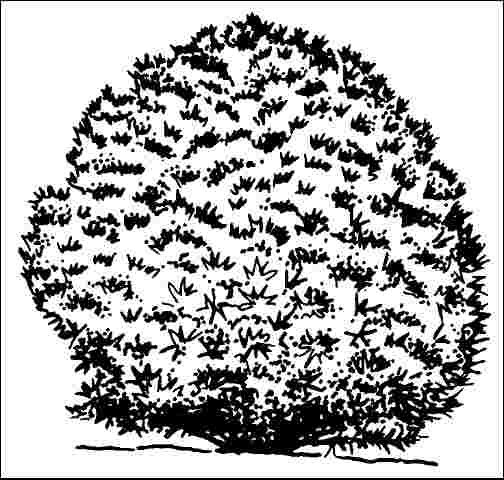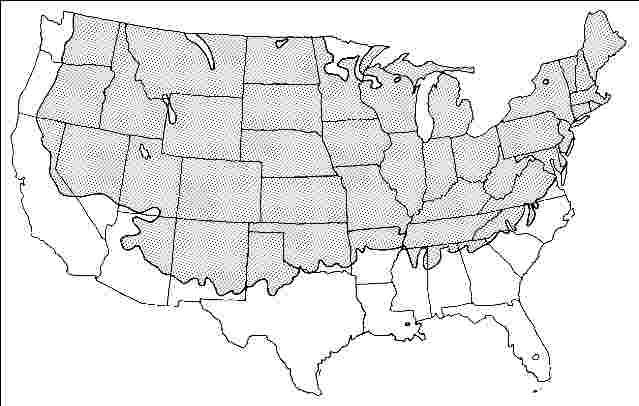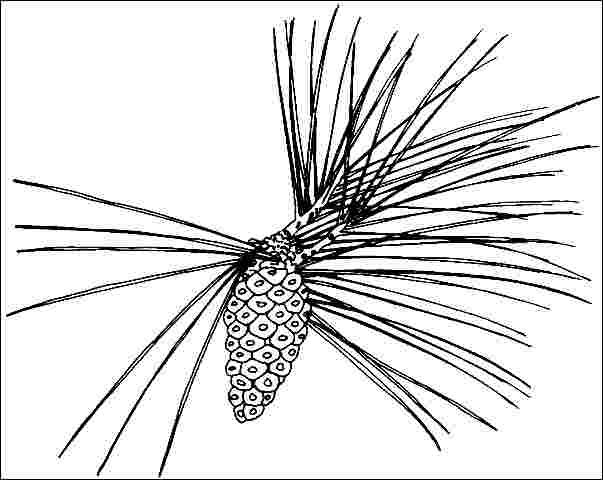Introduction
This cultivar of Japanese Red Pine reaches a height of 20 to 30 feet, but grows very slowly and is often seen much smaller. Needles are arranged in pairs and remain on the tree for about three years. A distinguishing feature of this tree is the upright, spreading branching habit which is uncommon in the Pine genus. The bark is unusually striking showing reddish-orange as it exfoliates. The form is compact and the tree stays small making it ideally suited for the residential yard. It can be used as a screen planted in mass or in a row, or alone as a specimen. Needles may turn yellowish during winter on some soils.

General Information
Scientific name: Pinus densiflora
Pronunciation: PIE-nus den-sih-FLOR-uh
Common name(s): 'Umbraculifera' Japanese Red Pine
Family: Pinaceae
USDA hardiness zones: 3B through 7A (Fig. 2)
Origin: not native to North America
Invasive potential: little invasive potential
Uses: specimen; Bonsai
Availability: not native to North America

Description
Height: 20 to 30 feet
Spread: 35 to 50 feet
Crown uniformity: irregular
Crown shape: oval
Crown density: moderate
Growth rate: moderate
Texture: fine
Foliage
Leaf arrangement: alternate (Fig. 3)
Leaf type: simple
Leaf margin: entire
Leaf shape: needle-like (filiform)
Leaf venation: parallel
Leaf type and persistence: fragrant, evergreen, needled evergreen
Leaf blade length: 2 to 4 inches, 4 to 8 inches
Leaf color: green
Fall color: no color change
Fall characteristic: not showy
Flower
Flower color: yellow
Flower characteristics: not showy
Fruit
Fruit shape: oval, cone
Fruit length: 1 to 3 inches
Fruit covering: dry or hard
Fruit color: tan
Fruit characteristics: does not attract wildlife; not showy; fruit/leaves a litter problem

Trunk and Branches
Trunk/bark/branches: branches don't droop; very showy; typically multi-trunked; thorns
Pruning requirement: little required
Breakage: susceptible to breakage
Current year twig color: green
Current year twig thickness: medium
Wood specific gravity: unknown
Culture
Light requirement: full sun
Soil tolerances: clay; sand; loam; acidic; well-drained
Drought tolerance: moderate
Aerosol salt tolerance: low
Other
Roots: not a problem
Winter interest: yes
Outstanding tree: yes
Ozone sensitivity: unknown
Verticillium wilt susceptibility: resistant
Pest resistance: resistant to pests/diseases
Use and Management
The tree prefers a site with full sun and a well-drained, slightly acid soil. Heavy clay soil is not suitable. This cultivar must be grafted for propagation.
There are a few other cultivars: `Alboterminata' - yellowish needle tips; `Aurea' - yellow needles; `Oculis-draconis' - Dragon's Eye Pine - two yellow lines on needles.
Pests
This tree is usually pest-free, with occasional scale, but the list of potential problems is long.
Diseases
Some of its diseases are needle blight and rusts. Canker diseases may cause dieback of landscape Pines. Keep trees healthy and prune out the infected branches.
Needle cast is common on small trees and plantation or forest trees. Infected needles yellow and fall off.
